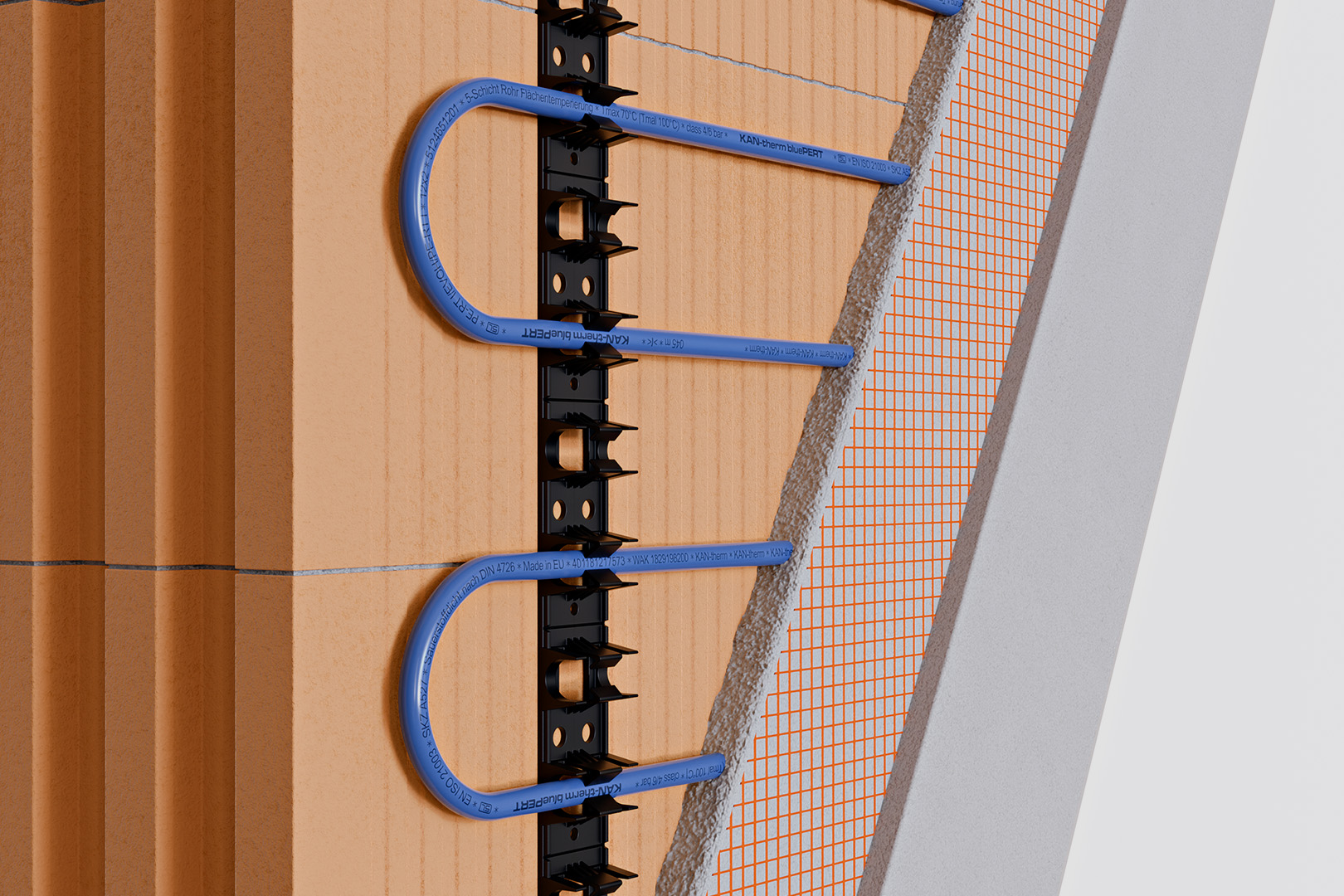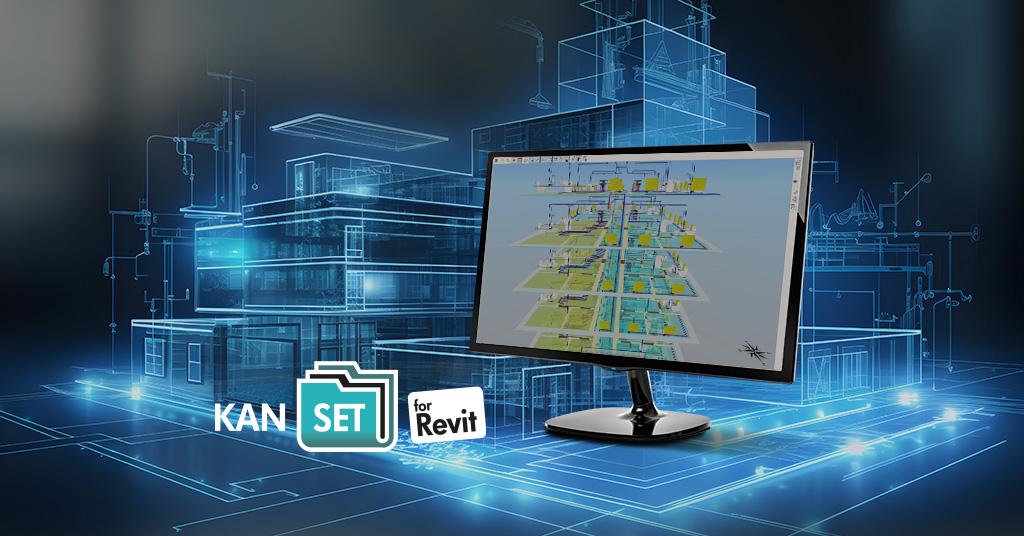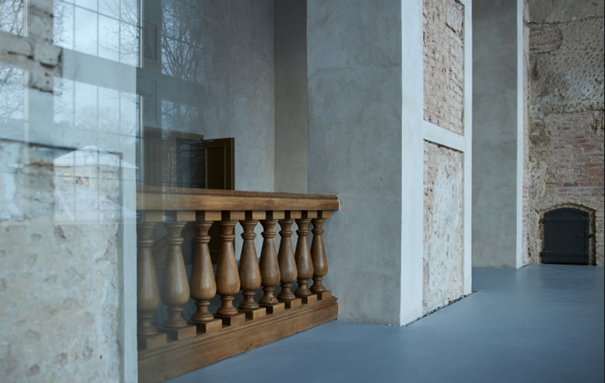Underfloor heating is no longer just a luxury and is becoming an everyday standard for comfortable and healthy living. We present convincing arguments for why surface systems are the future of modern construction. Get the facts and find out how investing in underfloor heating can improve your quality of life.
To summarize:
- Underfloor heating reduces the circulation of dust, which is beneficial for allergy sufferers.
- Surface systems increase comfort at home and thus the appeal and value of the property on the resale market.
- Underfloor heating and cooling systems ensure an even distribution of temperature in the room, increasing thermal comfort and energy efficiency of the installation.
- Surface heating can be switched to cooling mode in summer at no extra cost.
- Underfloor heating is more energy efficient than traditional radiators.
- Surface systems can work with different types of flooring, including tiles, wood and carpet.
You've definitely read about surface systems before. Now learn about the most popular myths about underfloor heating.
There are various more or less accurate facts about underfloor heating on the Internet. As an experienced manufacturer of surface heating and cooling systems, we know the subject inside out. The following are the most important observations arising from years of using our products.
Fact 1: Underfloor heating is the best solution for allergy sufferers
Surface systems are a real boon for allergy sufferers. They ensure comfortable and healthy living conditions in homes. Let's find out why this solution is so beneficial for those allergic to dust, pollen and mites:
- Reduced dust circulation: by reducing convection currents, underfloor heating significantly reduces the circulation and settlement of dust in the room. This is the complete opposite of traditional radiators, which promote increased dust circulation through uneven heat distribution - the air heats up at the radiator and travels upwards, where it cools down and sinks, spreading pollutants. And so it goes on and on.
- No dry air: gentle transfer of heat from the floor prevents the air in the house from becoming dry. Heating the house in this way prevents discomfort such as dryness in the nose or throat. Floor heating provides a comfortable environment for the airways of allergy sufferers.
- Clean and dry floor: surface heating systems keep the floor dry, which is particularly important in spring, autumn and winter, i.e. for most of the year. This not only contributes to maintaining a higher standard of hygiene in the home, but also eliminates potential sources of allergens, preventing the growth of mould and fungi.
- Aesthetic surfaces without dust: surface heating dispenses with traditional radiators. Similarly to pipes that are difficult to keep clean, they harbour dust. Eliminating radiators from the domestic environment not only improves the aesthetics of the rooms, but above all makes them safe for allergy sufferers.
Fact 2: Underfloor heating ensures even temperature distribution in the room
This may seem insignificant on paper, but in practice, the even heating of a room is crucial to the comfort of residents and the amount of money left in their wallets after winter. This is affected by:
- Even heat distribution: underfloor heating guarantees an optimal and body-healthy temperature distribution in the room. It is highest at floor level, which is natural for the human body. The further from the floor, the lower the perceived heat is. This eliminates the cold and hot spots that often occur when radiators are used.
- Increased comfort for residents: by using underfloor heating, it is possible to maintain thermal comfort at a higher level, even at lower room temperatures. With an underfloor heating system, residents will feel comfortable even at temperatures of 20°C, benefiting both their health and wallet.
- Energy efficiency: compared to radiators, surface heating enables achieving the desired room temperature with lower energy consumption. This is precisely due to the even distribution of heat. This translates into savings of up to several per cent per year.
- Optimisation of the heating system: underfloor heating systems consist of pipes evenly distributed over the entire floor area to maximise their use for the heat generated. These pipes, covered by a layer of screed, are connected to an efficient, low-temperature heat source such as a gas condensing boiler. This guarantees low-cost heating of living spaces.
- Influence on well-being: the positive impact that an even temperature distribution in the rooms has on the well-being of residents cannot be overstated. Underfloor heating systems eliminate the unpleasant cold sensation often associated with the use of traditional radiators, which has a direct impact on the living comfort and health of residents.
Fact 3: 2-in-1 investment - underfloor heating turns into underfloor cooling in summer
Underfloor heating/cooling is not only a way to stay pleasantly warm in winter, it is also a proven method of cooling interiors during the summer heat. And it's easier than you think. Most importantly, it does not require additional financial outlay. Let's take a closer look at the facts in favour of choosing this multi-functional installation.
The use of reversible heat pumps allows efficient use of the underfloor system for both heating in winter and cooling in summer. Simply changing the settings will circulate water in the pipes at a temperature lower than the ambient temperature. This allows the house to be cooled without the need for air conditioning.
Pleasant coolness in summer without discomfort - a benefit of underfloor installation.
Contrary to common myths, underfloor surface installations are ideal for cooling. It's true that their effectiveness may be lower compared to other methods, such as air conditioners. However, the cost-effectiveness of this solution is incomparably higher, both during installation and operation. Just consider that installing a surface heating system will equip your house with a cooling system at the same time, without incurring additional costs during construction.
Keeping the house cool without disfiguring the house front
In addition, the cooling in the wall and in the floor is invisible - there is no need to install an air conditioner that disfigures the façade with its appearance and condensation drips, and on top of that spoils the harmony of the interior. In addition, air conditioning must be installed on each floor and even in each individual rooms to be effective. Why waste money on such expenses when a surface installation will effectively heat the house in winter and cool it in summer? It is worth remembering what the efficiency of such a solution depends on, as Mariusz Choroszucha, Director of the Technical Support Department of the KAN Group, reminds us:
“A cooling system built into the floor structure will have the lowest possible capacity, and ceiling cooling will be the most effective. With this type of installation, care must be taken to prevent moisture from condensing on the surface. For this purpose, the use of special humidity sensors mounted on the cooling surface is recommended. This works in practice and allows the room temperature to be lowered without the blasts of cold air that suffer when using electric air conditioning.”
Fact 4: Underfloor heating is more energy efficient than radiators
Long gone are the times when underfloor heating was an expensive indulgence for investors. Today, it is a key component in the efficient energy management of a modern building. It is a way of significantly reducing heating bills.
The low flow temperature of underfloor heating systems reduces heat loss. This means less electricity is needed to power the heat pump or less fuel is used for the boiler. By using the concrete floor as a buffer, plane systems have longer heating cycles - they give up heat longer after they stop working, whereas tin radiators cool down quickly.
Lower heating temperature without sacrificing heat
It's worth pointing out here that a reduction in the room air temperature by as little as 1 to 2°C allows energy savings of 5-10%. This can be achieved by using surface heating, but not radiators. In the case of radiators, such a difference in heating intensity will significantly impact the residents’ comfort. With underfloor heating, however, it is virtually undetectable.
In short: with more economical power settings, underfloor heating systems provide the home with the necessary thermal comfort. As a result, after just two years of operation, an underfloor heating system can start to generate savings, amortising the initial investment costs. Underfloor heating will also have a positive effect on your wallet on an annual basis - saving up to 30% in fuel, energy or heating costs.
Self-regulation is another notable aspect of surface heating systems. An increase in room temperature leads to a natural decrease in heating efficiency, which further contributes to cost reduction.
Ecological and economical heat through a surface heating system
Furthermore, it is worth pointing out that surface heating systems are a perfect foil for environmentally friendly heat sources. When investing in underfloor heating, the following solutions are worth considering:
- Gas condensing boilers;
- heat pumps;
They allow further savings to be generated over the long term use of the building. In light of these facts, it is difficult not to consider underfloor heating as one of the most economical and environmentally friendly heating options for modern homes.
Fact 5: Underfloor heating can be installed under various types of flooring, including tiles, wood and even carpet
The versatility of underfloor heating does not end with functionality; the system is compatible with a variety of flooring materials. This flexibility allows underfloor heating to seamlessly blend with any interior design solution.
Traditional ceramic tiles are by no means the only floor finish that can be used with underfloor heating systems. Modern finishing materials also enable the use this solution under wooden planks, carpets, even laminate. The key to success is the right choice of products and technology in line with manufacturers' declarations. This guarantees optimum thermal efficiency of the surface without the risk of damaging the floor.
What wood is suitable for a heated floor?
Ceramic tiles obviously remain a popular choice due to their excellent thermal conductivity and ability to accumulate heat. However, wood, known for its natural insulating properties, can also be used with underfloor heating systems. This applies only to wood types considered to be temperature-tolerant, i.e.:
- merbau,
- doussie,
- Iroko,
- rubberwood,
- tectona,
- wenge,
- sucupira,
- oak,
- robinia,
Even carpets, often considered incompatible with underfloor heating, can be successfully used in such an arrangement. All you need to do is find a product with low thermal resistance.
Fact 6: Installing underfloor heating can increase property value
There is no denying that surface heating and cooling is the technology of the future available now. The increasing energy efficiency of buildings is eliminating the need for radiators and more and more people are seeing them as an obsolete solution.
This is why a house with a high-quality plumbing and heating system that meets the future needs of the occupants will be attractive on the resale property market. In the eyes of the purchaser, surface systems will be an important aspect when deciding on whether to buy a property. Investing in underfloor heating will also strengthen the vendor's position in price negotiations.
A house with underfloor heating is easier to sell
It is worth noting that banks are more willing to grant loans for the purchase of modern houses that meet high energy management standards. Already, some lenders are reluctant to finance solid fuel boiler rooms with outdated boilers and are deducting the value of such solutions from property valuations. Although on the surface this is only a problem for the borrower, it can actually be an unpleasant surprise for both parties to the property deed. By offering a house for sale equipped with modern heating, you will protect yourself and the potential buyer from an unpleasant surprise from the bank. This can be the deciding factor in closing the sale of the property.
Fact 7: Underfloor heating allows for a more aesthetically pleasing and practical interior design
The surface systems not only combine high energy efficiency and thermal comfort - they also open up new possibilities for interior design. Doing away with traditional radiators and visible plumbing elements allows complete freedom in the design of the space. It will be appreciated by all aesthetes and lovers of minimalist, neat interiors.
Underfloor heating matches any design style, from classic to contemporary. This is particularly important in the context of contemporary design trends, where every detail counts.
The use of surface heating and cooling means designing a space without restrictions - it allows furniture and decorations to be positioned freely, without worrying about blocking heat sources and without compromising on reconciling aesthetics and technical necessity. As a result, interiors can become more spacious, bright and open. This translates into a higher quality of life for residents and complete satisfaction with their own roof over their heads.
It is therefore a fact that surface heating allows the design vision to be fully realised without half-measures.









